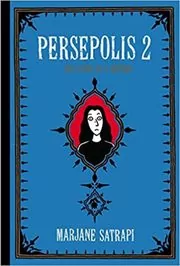Nausea Summary
Author: Jean-Paul Sartre
This page offers our Nausea summary (Jean-Paul Sartre's book). It opens with an overview of the book, and follows with a concise chapter-by-chapter summary.
Drafted with AI assistance and reviewed by a human editor.
As an Amazon Associate, we earn from qualifying purchases (at no extra cost to you).
Overview
Antoine Roquentin, a resident historian in the French town of Bouville, commences a journal in an attempt to comprehend the unnerving and sickly feelings that have haunted him lately. He is unclear about the nature of his affliction and contemplates the necessity of the diary itself. However, he soon finds himself consumed by what he coins as Nausea, prompting him to meticulously record every minor fact, sensation, and interaction, both internal and external. He attempts to interact with mundane objects - holding a stone, inspecting a beer glass, trying to touch a damp scrap of paper - each experience intensifies his sensation of an ominous and smothering presence.
For a decade, Roquentin has been deeply immersed in investigating the life of the Marquis de Rollebon, a French nobleman who lived during the French Revolution. Roquentin relocated to Bouville, Rollebon’s hometown, to facilitate his research and write a book on him. Yet, his feelings of Nausea invade his research, blurring his own identity with Rollebon’s whenever he catches his reflection. His interest in his work wanes due to the realization that he will never truly comprehend Rollebon. He feels suffocated by his obsession with the past and decides to focus on living in the present.
Roquentin soon realizes that his Nausea is linked to existential concerns. He acknowledges that he allowed his research into Rollebon and his obsession with the past to validate his own existence. Roquentin boldly affirms his existence, believing that others are too fearful to acknowledge their own. His attention is drawn to the existence of objects and people, leading to the insight that existence precedes essence. He grasps that his perception of the physical attributes of things, the essence, obscures the naked existence of those things: that the pleasant illusions of tastes, colors, and appearances are creations of the observer. This revelation brings him face to face with the stark existence of things, thus revealing the source of his Nausea.
Upon visiting his former lover Anny in Paris, Roquentin is disheartened to find they can no longer communicate effectively. Despite his attempts to explain his feelings of Nausea to Anny, she fails to comprehend. They part ways, aware that they will never see each other again. Back in Bouville, Roquentin decides to liberate himself from the past by embracing his existence in the present. He tries to convey his newfound perspective to a café acquaintance, the Self-Taught Man, but is unable to convince him that human love is merely an essence, that existence has no purpose beyond "nothingness." In spite of his despair and his decision to abandon his research, Roquentin elects to move to Paris and write a novel.
Edited by
Software engineer whose passion for tracking book recommendations from podcasts inspired the creation of MRB.
Lead investor at 3one4 Capital whose startup expertise and love for books helped shaped MRB and its growth.







Comments
Did we miss something? Have feedback?
Help us improve this page by sharing your thoughts